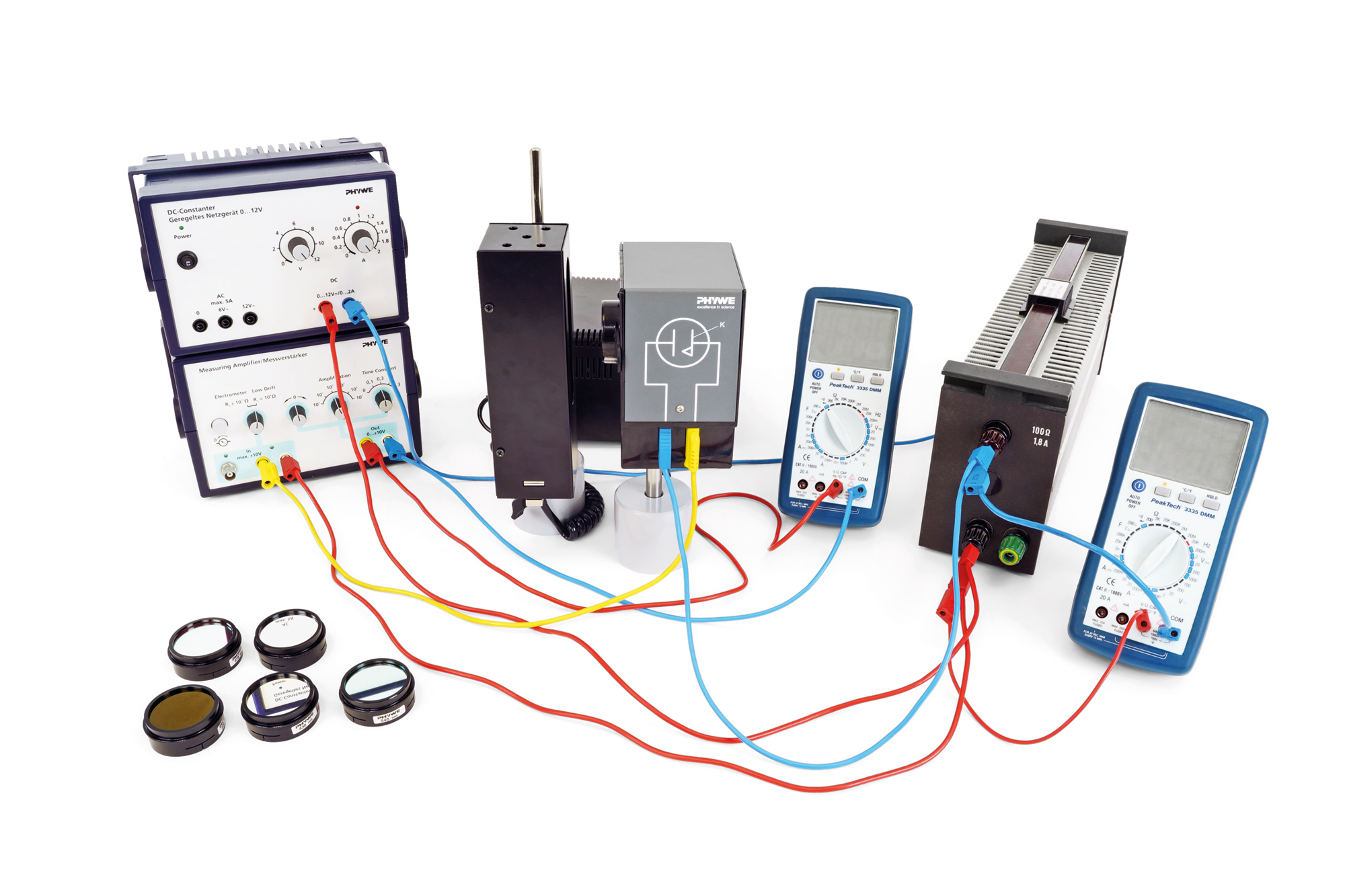Principle
A photocell is illuminated with monochromatic light of different wavelengths from a filament lamp with interference filters. The maximum energy of the ejected electrons in the photo-cell depends only on the frequency of the incident light, and is independent of its intensity. The stopping voltage Uo at different light frequencies is determined by the U/I caracteristics of the photocell and plotted over the corresponding light frequency f. Planck's quantum of action or Planck's constant (h) is determined from this graph .
Benefits
- Experience the essence of the Nobel Prize: Planck (1918)
- Planck's "quantum of action" the most important proof in quantum physics measured directly within few hours with the photocell
- Modular setup with the photocell and interference filters
- Easy determination of h
- No darkroom required
Tasks
To determine Planck's quantum of action from the photoelectric voltages measured at different wave lengths
Learning objectives
- External photoelectric effect
- Work function
- Absorption
- Photon energy
- Anode
- Cathode

